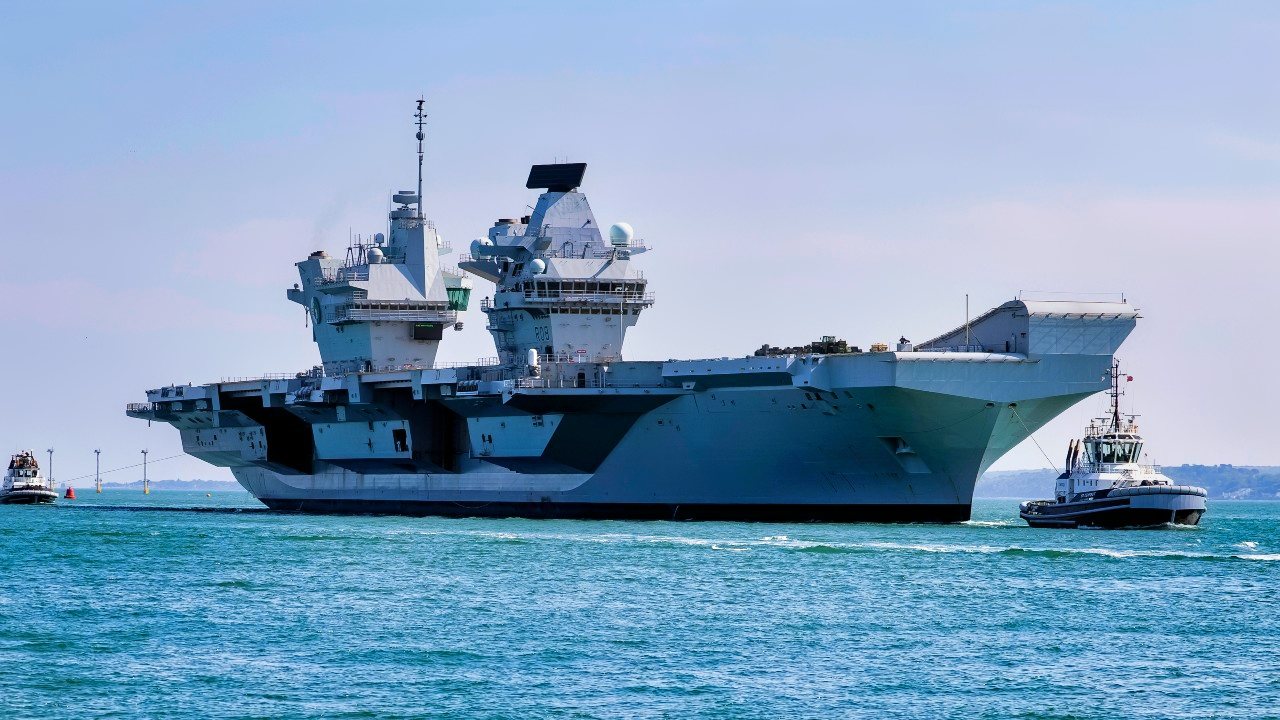The Royal Navy and Its Aircraft Carriers are on the Comeback Trail
The Royal Navy’s aircraft carriers, HMS Queen Elizabeth and HMS Prince of Wales, have returned to sea after recent mechanical setbacks that sidelined both ships.
Summary and What You Need to Know: The Royal Navy’s aircraft carriers, HMS Queen Elizabeth and HMS Prince of Wales, have returned to sea after recent mechanical setbacks that sidelined both ships.

-While these carriers are impressive on paper, featuring F-35B fighter jets and advanced technology, they have yet to fully prove their combat capabilities, apart from limited operations in 2021.
-The Royal Navy still faces challenges, such as limited logistical support and reliance on NATO allies to operate a carrier strike group.
-As both ships resume operations, there is hope the Navy can regain its prominence on the global stage, though uncertainty remains about its future direction.
Is the Royal Navy Finally Back?
On the evening of September 3, 1939 – hours after the UK declared war on Germany, following the latter's invasion of Poland two days earlier – Winston Churchill was called upon to head up the Admiralty and to lead the Royal Navy. Churchill had previously served in the role during the First World War, and in response to his being named to the post, a message went out to the Royal Navy's ships and stations around the globe, "Winston is Back!"
It was thus fitting that 85 years later both of the Royal Navy's aircraft carriers are now at sea, possibly signaling that the UK's senior service is ready to once again take its place on the world stage after a tumultuous two years.
"Summer leave over! Good to be heading back to sea for a busy period of equipment trials and training," the official social media account of HMS Queen Elizabeth announced in a post on X on Monday, while sharing a video of the warship's departure from Portsmouth.
"After a brief period of leave, we return to sea with our focus firmly on preparations for Operational Sea Training," the account for HMS Prince of Wales also noted on X, the social media platform formerly known as Twitter, later the same day.
Smooth Sailing Ahead?
It was in August 2022 that HMS Prince of Wales was scheduled to travel to the United States to host the Atlantic Future Forum trade and economic conference in New York City. However, soon after departing His Majesty's Naval Base, Portsmouth (HMNB Portsmouth), the vessel suffered mechanical problems and was forced to anchor off the Isle of Wight.
The flattop was forced to undergo lengthy repairs to her propeller shaft and motors at the Rosyth Dockyard, where the carrier had been built and launched. The Royal Navy carrier was sidelined for nearly a year, only returning to service in July 2023.
Earlier this year, HMS Queen Elizabeth suffered a similar mishap and also spent several months in Rosyth in Fife Scotland undergoing repairs. The back-to-back issues were a source of embarrassment for the Royal Navy, putting in question whether each of the £3.2 billion ($4.17 billion) was up to the task at hand.
On paper, the carriers are impressive warships.
HMS Queen Elizabeth formerly entered service in 2020, becoming the first carrier operated by the UK's Royal Navy since the HMS Ark Royal was decommissioned in 2011. The 932-foot-long warship is far more automated and advanced than any previous Royal Navy carrier, while it is capable of deploying 36 of the F-35B Lighting II fifth-generation stealth fighters. The carrier is able to launch twenty-four of the aircraft in just five minutes and has a maximum recovery rate of twenty-four aircraft in as many minutes.
In addition to carrying what has been described as the most dominant fifth-generation jet fighter in service today, the carrier's air wing is also composed of nine anti-submarine Merlin HM2 medium-lift naval helicopters along with four or five Merlin choppers for airborne early warning missions. For land operations, the carrier can also carry a mix of other helicopters including the CH-47 Chinook, AH-64 Apache, Merlin HC4, and Wildcat HM2.

However, apart from deploying F-35s against ISIS during her 2021 globetrotting voyage to the Indo-Pacific and back, HMS Queen Elizabeth had not taken part in combat operations.
There was speculation either the Royal Navy flagship or her sister carrier, HMS Prince of Wales, would be sent to aid the United States Navy's mission in the Red Sea to protect commercial shipping from the Iran-backed Houthi militants in Yemen, but the plans never materialized. It has been widely accepted that the Royal Navy remains unable to adequately defend or operate the carriers independently. It would need the support of other NATO warships to make up a carrier strike group (GSG).
Even worse, the UK's senior service has just one solid stores ship, RFA Fort Victoria, to support the carriers and she is due to be retired in 2028. This has led to some calls that perhaps the Royal Navy should consider selling or at least mothballing one of its carriers – but clearly it has needed a "spare" on more than one occasion.
The Royal Navy must now hope that the problems are in the past, and it can look to the future – but exactly what role the aircraft carriers will serve is unclear. Right now, what the service may need is someone like Winston Churchill at the ready to chart the course forward.
Author Experience and Expertise: Peter Suciu
Peter Suciu is a Michigan-based writer. He has contributed to more than four dozen magazines, newspapers, and websites with over 3,200 published pieces over a twenty-year career in journalism. He regularly writes about military hardware, firearms history, cybersecurity, politics, and international affairs. Peter is also a Contributing Writer for Forbes and Clearance Jobs. You can follow him on Twitter: @PeterSuciu. You can email the author: [email protected].
Image Credit: Creative Commons and/or Shutterstock.


